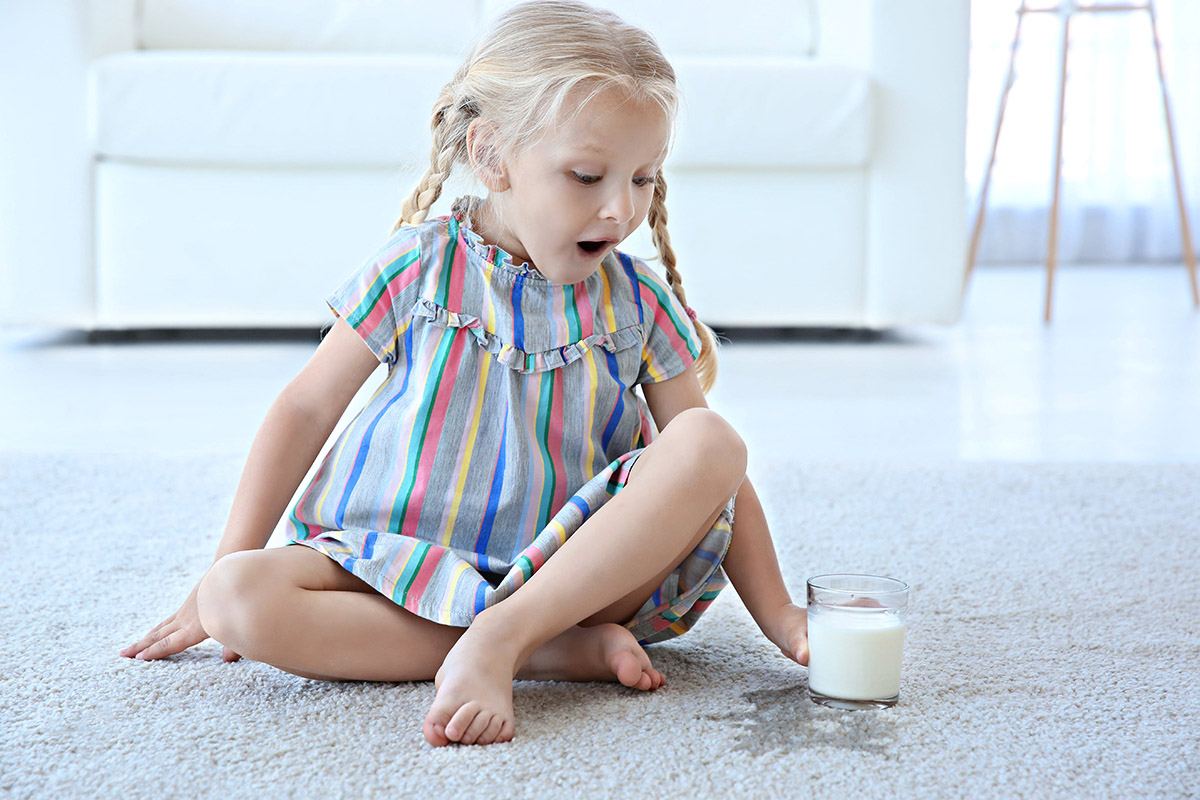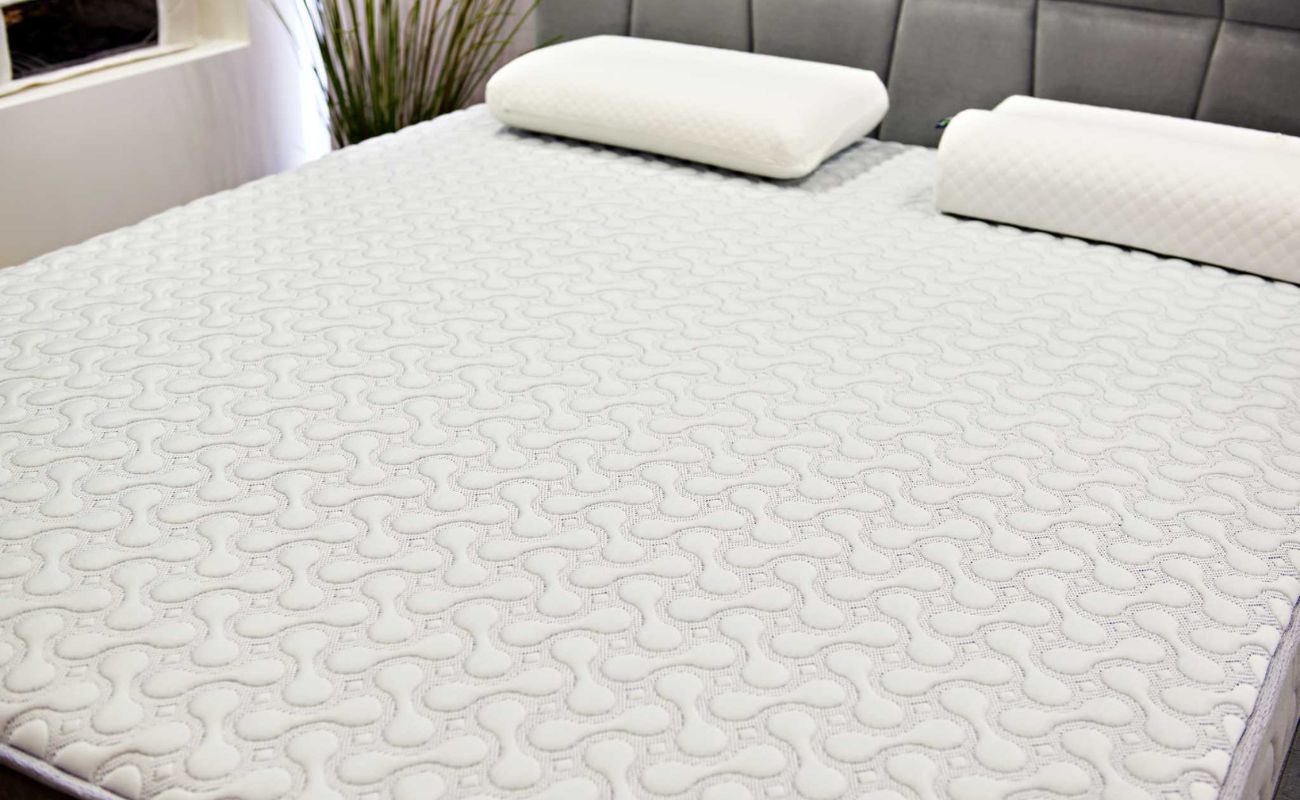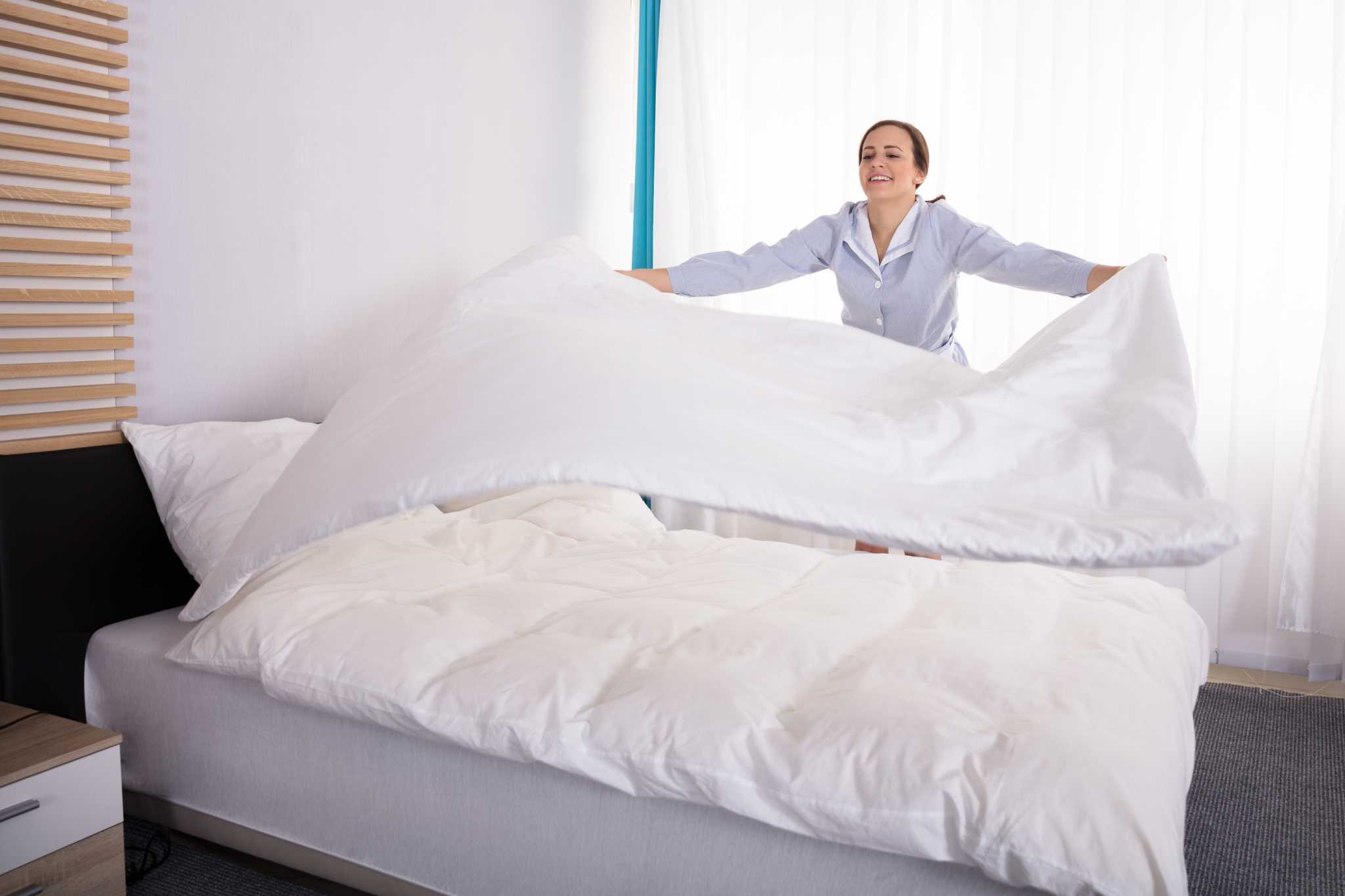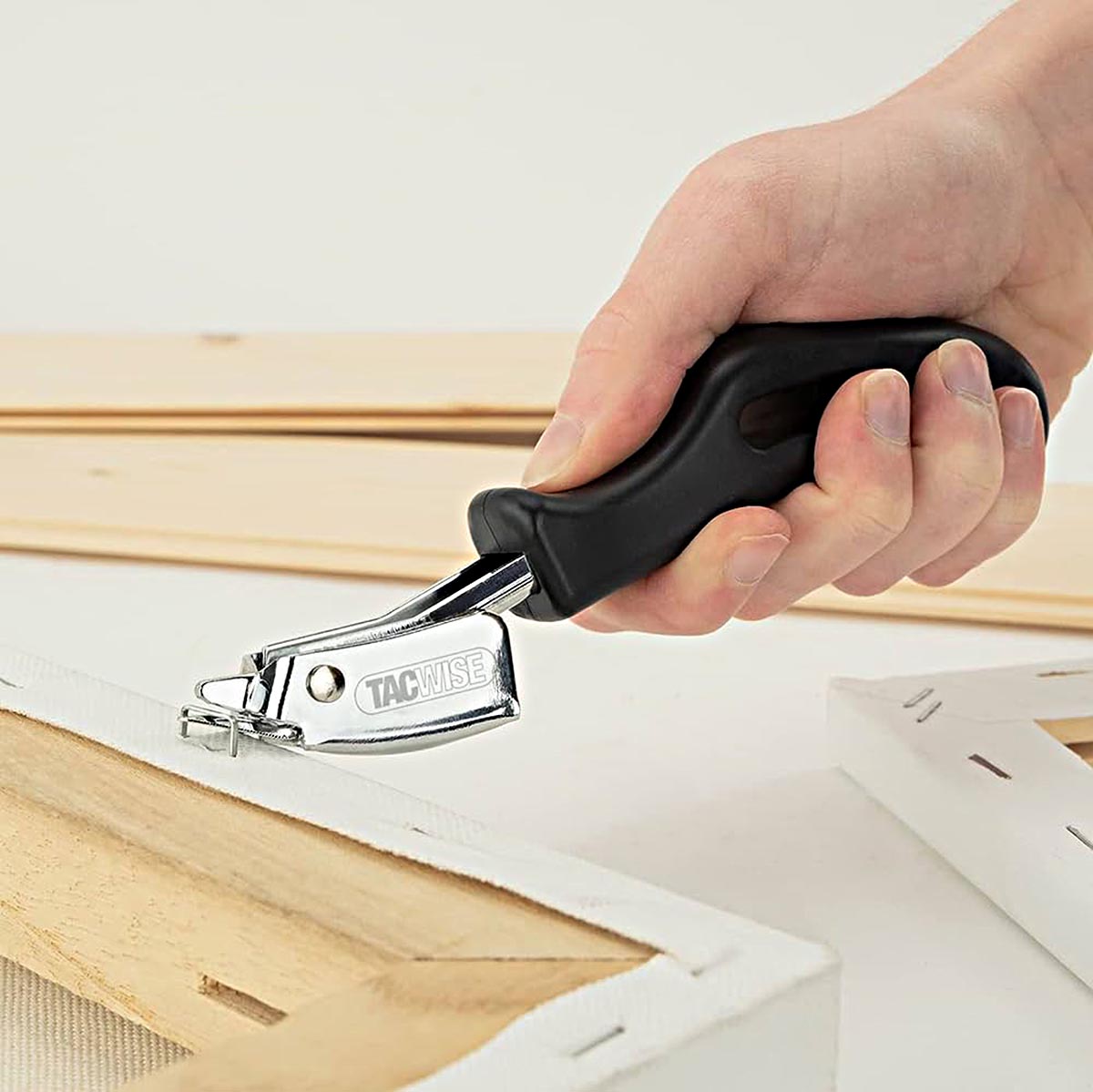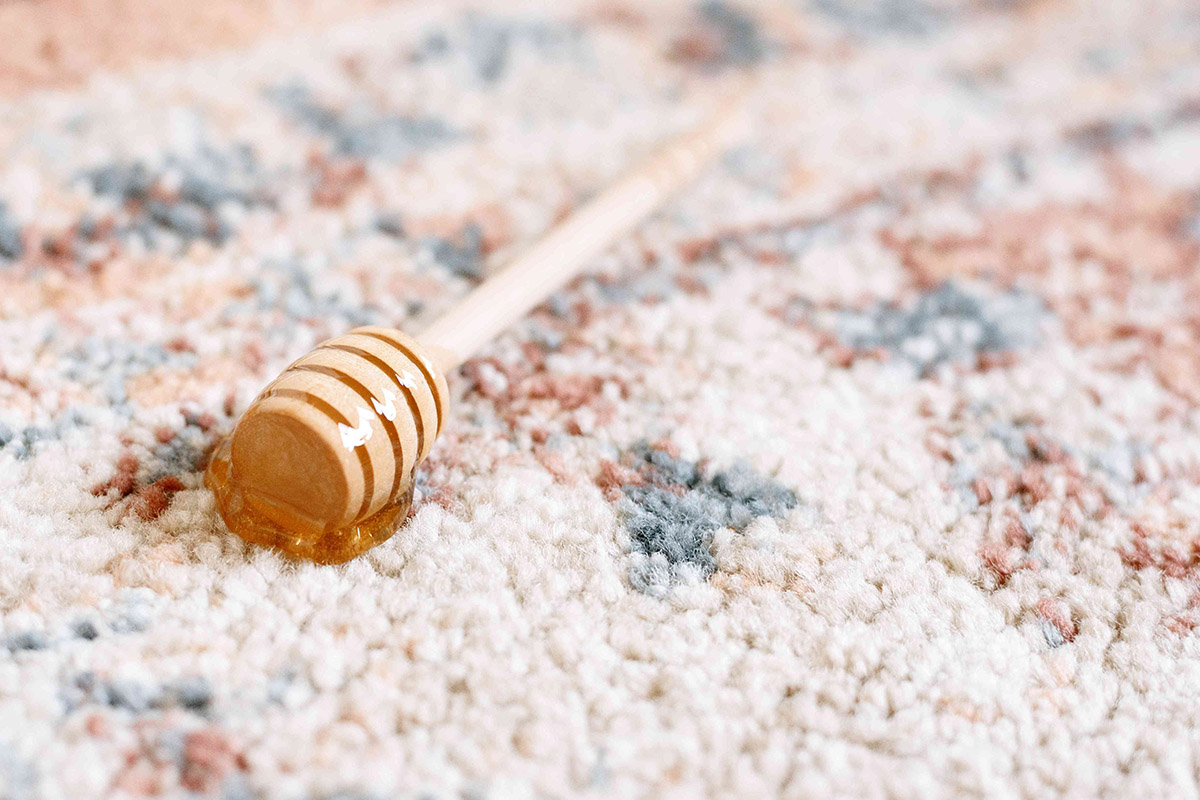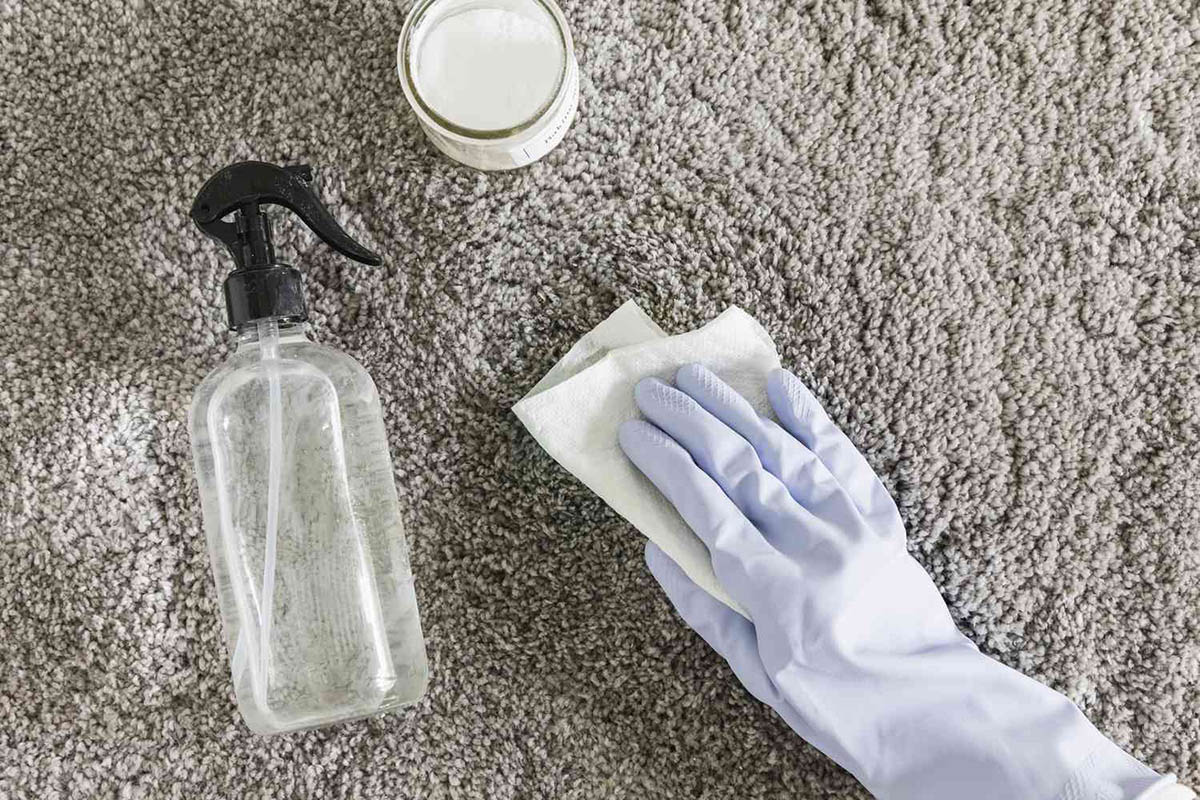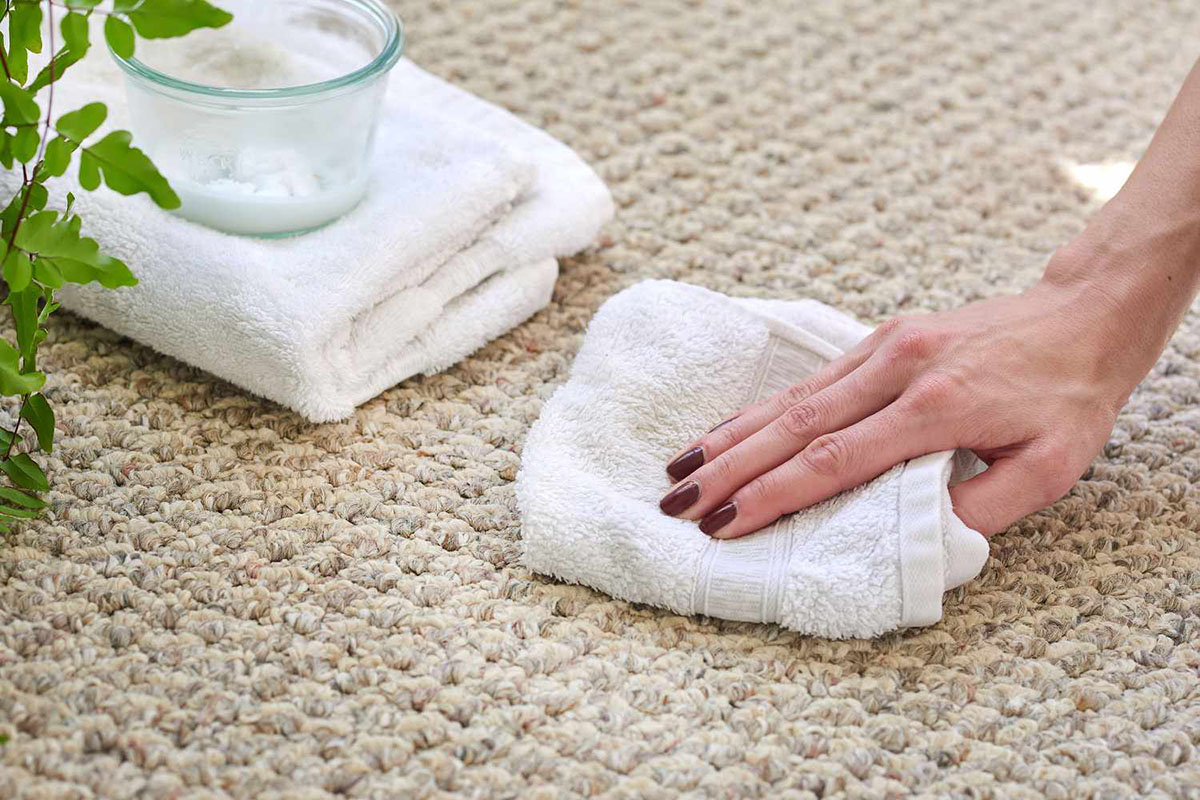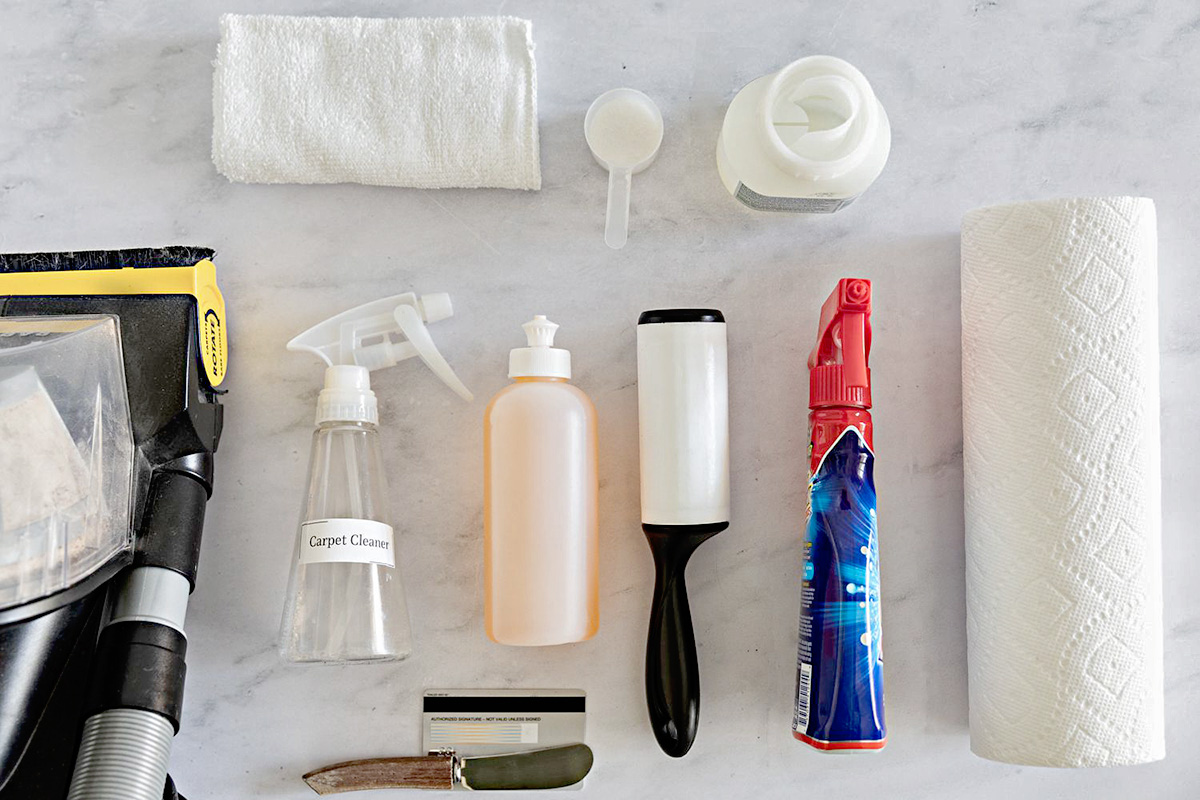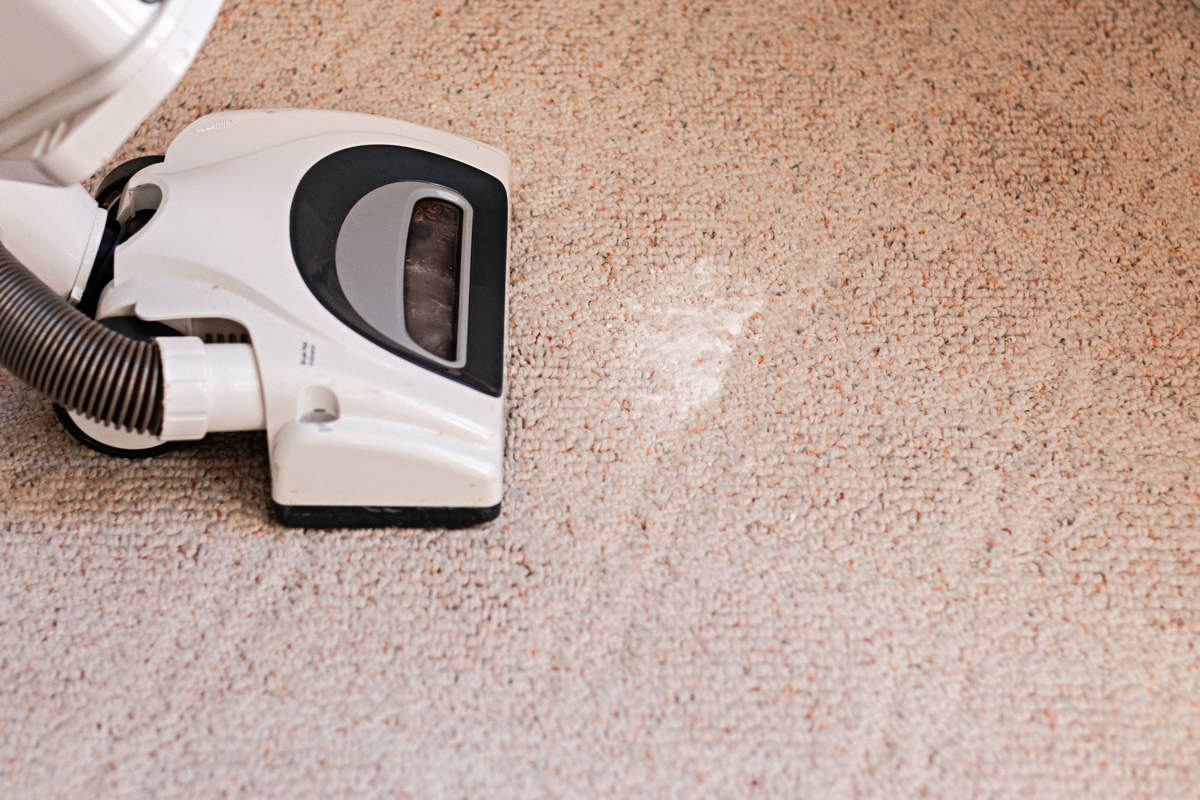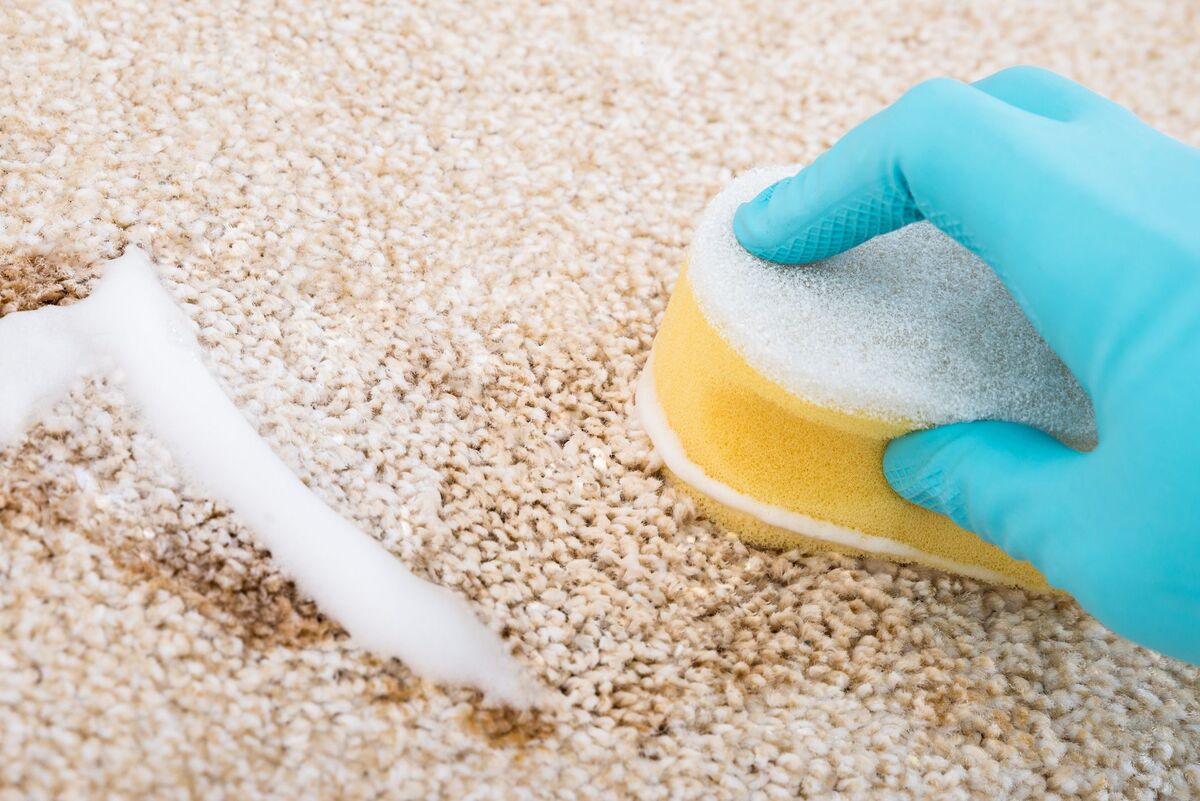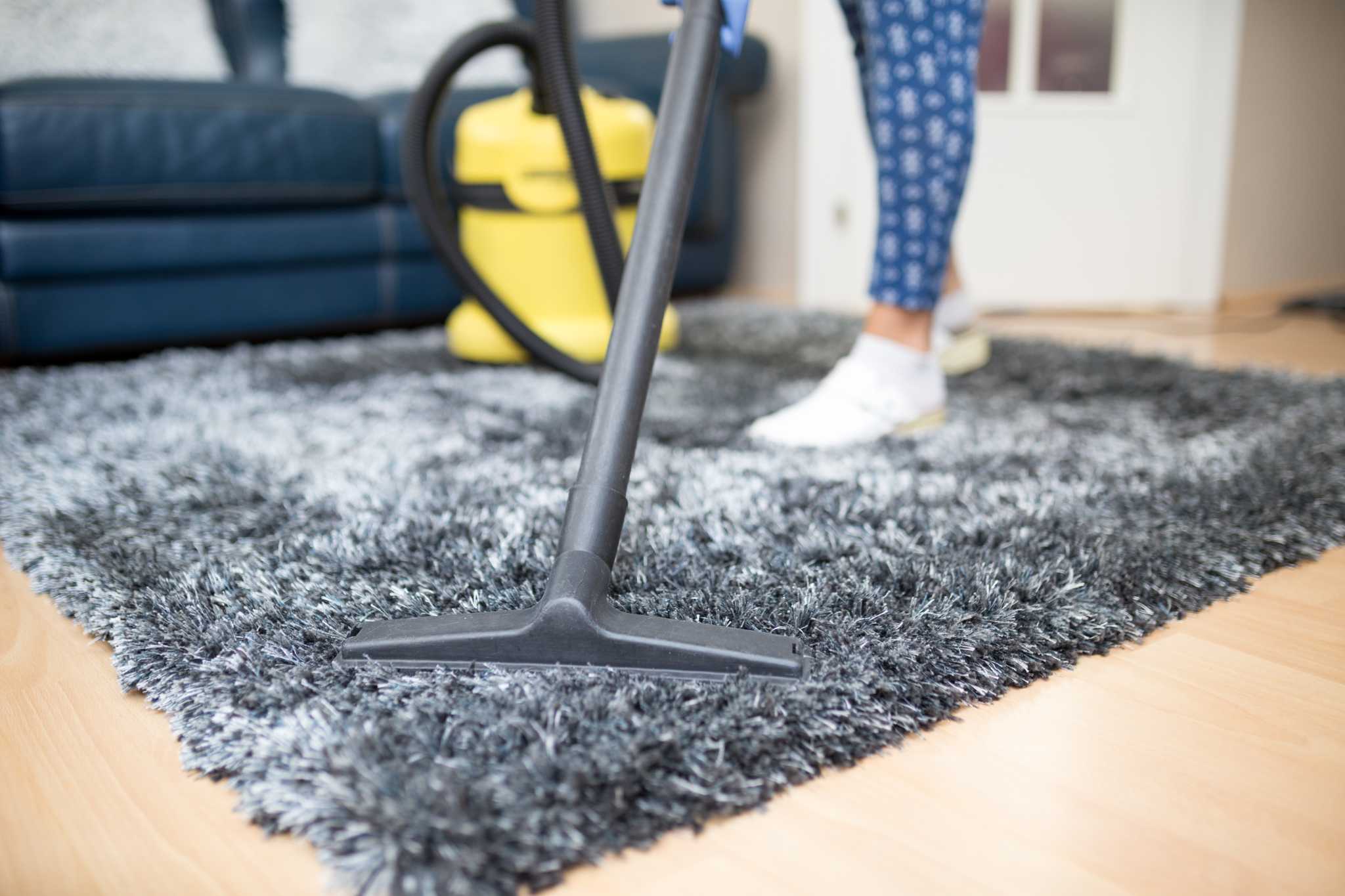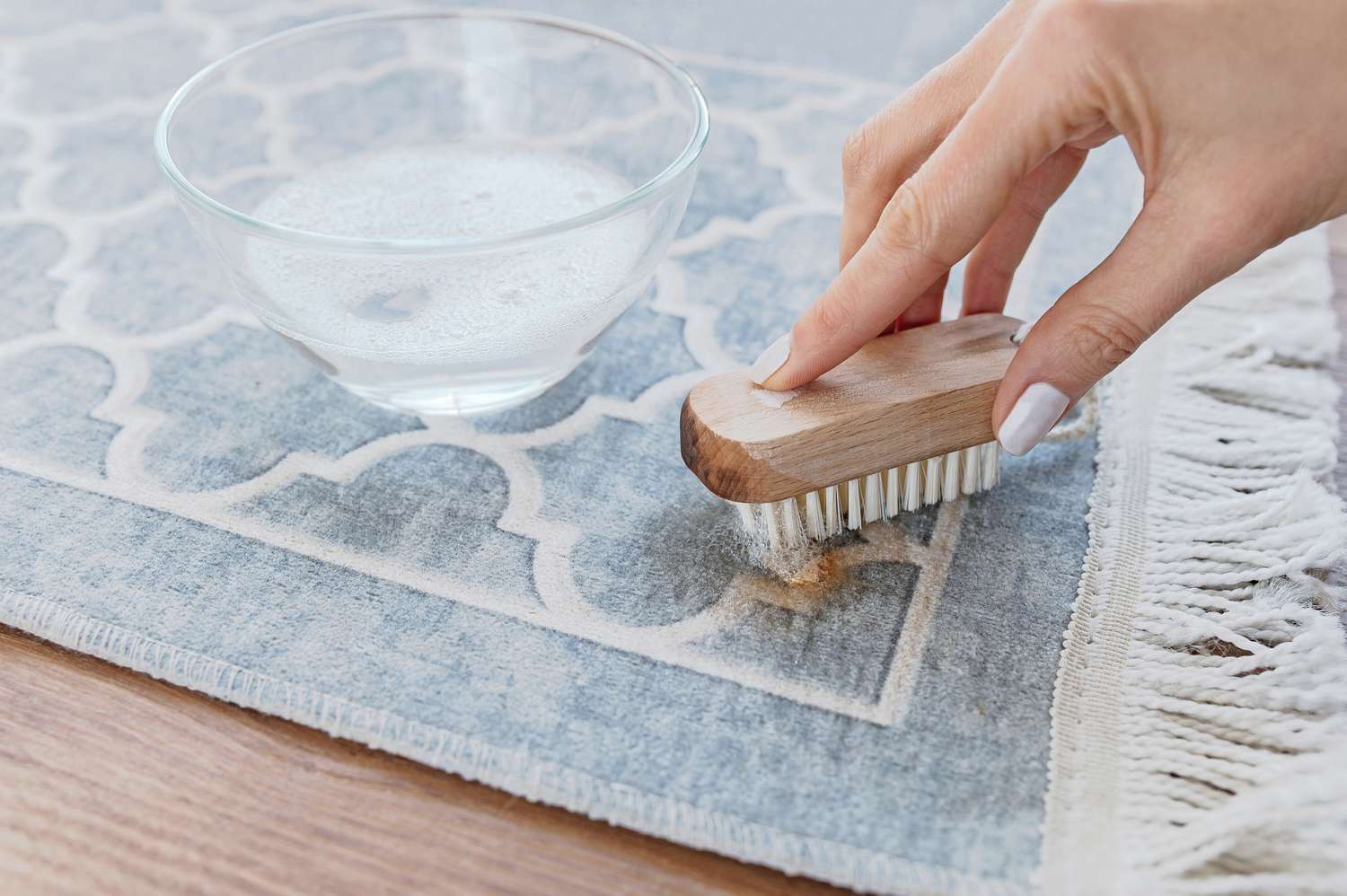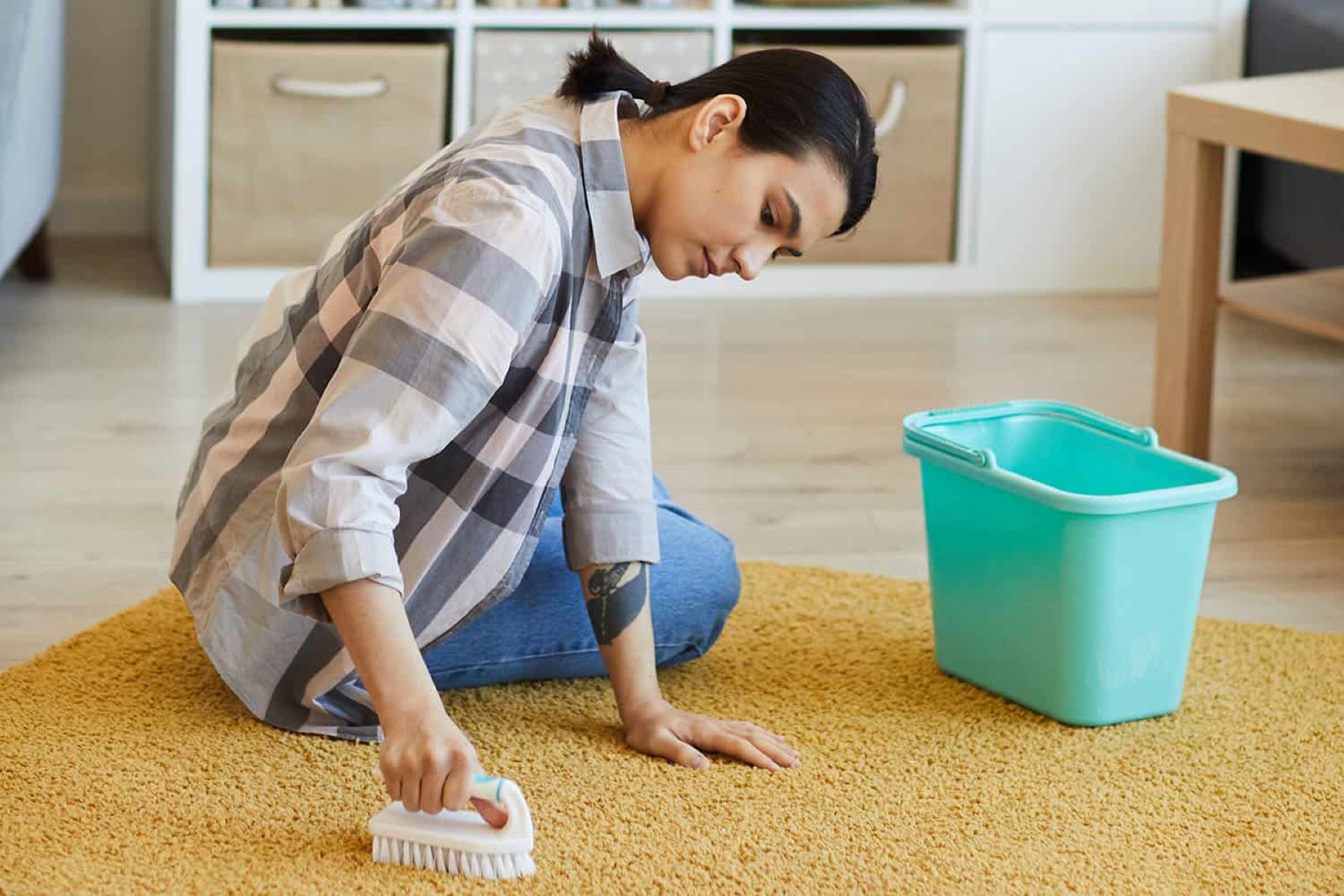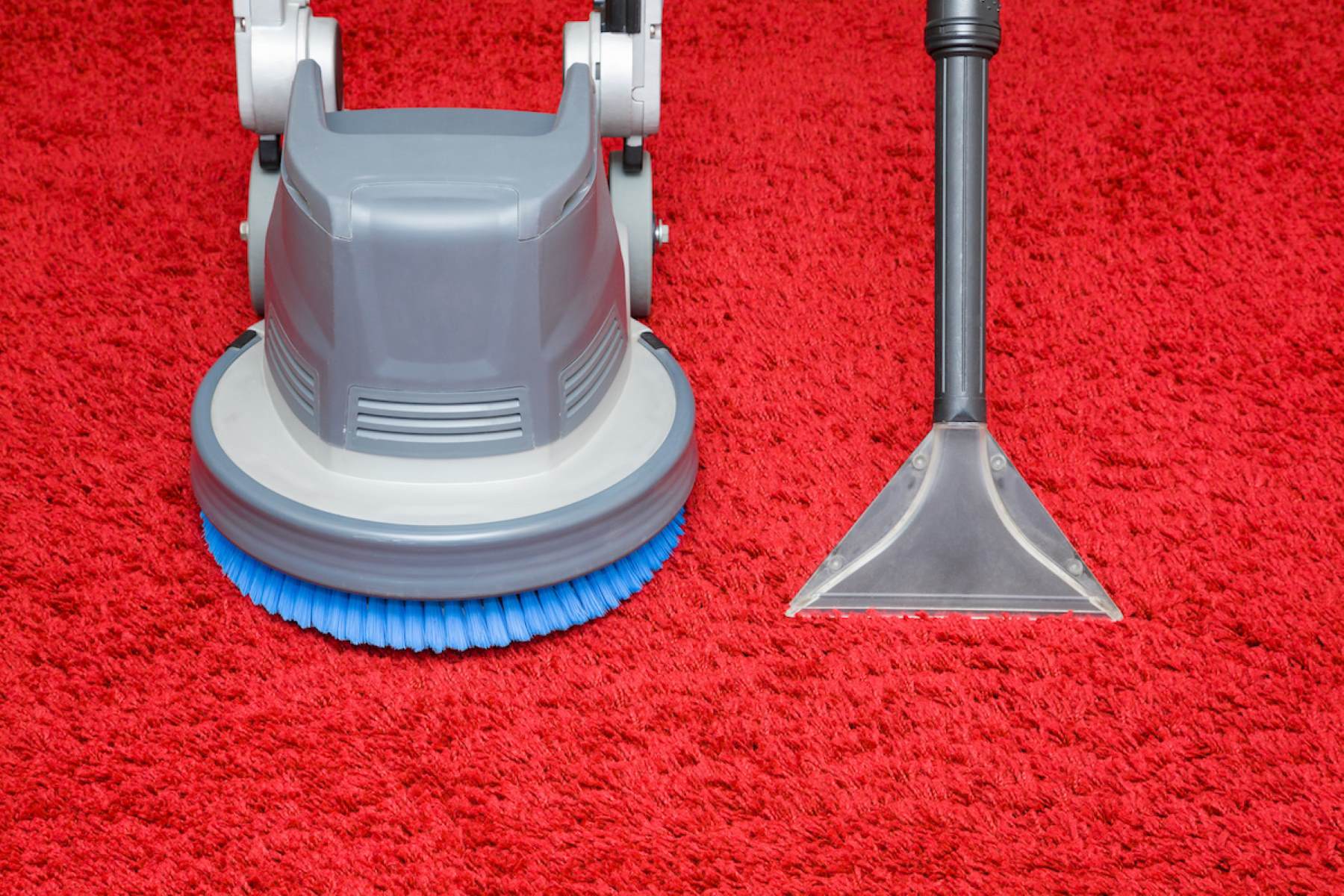

Articles
How To Get Sour Milk Out Of A Carpet
Modified: October 20, 2024
Discover effective tips and tricks in our articles on how to easily remove sour milk stains from your carpet. Say goodbye to unpleasant odors and restore your carpet's freshness.
(Many of the links in this article redirect to a specific reviewed product. Your purchase of these products through affiliate links helps to generate commission for Storables.com, at no extra cost. Learn more)
Introduction
Dealing with a sour milk stain on your carpet can be a real headache. Whether it happened due to a spilled cup of milk or a forgotten bottle hidden under the couch, the foul odor and unsightly stain can quickly turn a pleasant living space into a smelly nightmare. Fortunately, with the right approach and a little bit of elbow grease, you can effectively remove sour milk from your carpet and restore its freshness.
Before diving into the cleaning process, it’s important to assess the situation and understand the potential consequences of leaving the stain untreated. Sour milk can seep deep into the fibers of your carpet, leading to a persistent odor and the growth of bacteria or mold. It’s crucial to act promptly to prevent any long-term damage.
In this guide, we’ll walk you through a step-by-step process to successfully remove sour milk stains from your carpet. From blotting the initial spill to applying a cleaning solution and ensuring proper drying, our tips and tricks will help you get your carpet looking and smelling like new again.
Keep in mind that different carpet materials and colors may require specific cleaning methods, so it’s always a good idea to consult your carpet manufacturer’s guidelines. Additionally, before applying any cleaning solutions, perform a small patch test in an inconspicuous area to ensure that it doesn’t cause any discoloration or damage.
Now, let’s proceed to the first step – assessing the situation and understanding the extent of the sour milk stain on your carpet.
Key Takeaways:
- Act quickly and assess the situation when dealing with sour milk stains on your carpet to prevent long-term damage and odors. Blot, apply cleaning solutions, and ensure proper drying for effective stain removal.
- Utilize household cleaning solutions, blotting techniques, and proper drying methods to effectively remove sour milk stains from your carpet. Consider professional help for stubborn stains and prioritize regular carpet maintenance.
Read more: How To Get Milk Stain Out Of A Carpet
Assessing the Situation
Before diving into the cleaning process, it’s essential to assess the situation and determine the severity of the sour milk stain on your carpet. This evaluation will help you determine the appropriate course of action and the necessary supplies needed for the task.
Start by examining the size of the stain. Is it a small spill or a larger area that needs attention? Understanding the extent of the stain will give you an idea of the time and effort required for removal. Additionally, check if the milk has soaked into the carpet fibers or has only affected the surface. A deeper penetration may require more thorough cleaning techniques.
Next, consider the age of the stain. Has it recently occurred, or has it been sitting for a while? Fresh stains are generally easier to remove than dried or set-in stains. If the milk has had time to dry, it may take more effort and time to effectively eliminate the odor and discoloration.
Take note of any accompanying odor. Sour milk can emit an unpleasant smell that can permeate the surrounding area. A strong odor indicates that the milk may have seeped deeper into the carpet padding or subfloor. In this case, it’s crucial to address the odor issue alongside the stain removal process.
Lastly, examine the carpet material and color. Different carpets have specific cleaning requirements, and some cleaning solutions or methods may cause discoloration or damage. Check the manufacturer’s guidelines to ensure that you are using the appropriate cleaning approach for your specific carpet type.
By assessing the situation thoroughly, you’ll have a better understanding of the stain’s severity and be equipped with the necessary information to proceed with the appropriate cleaning methods. Now that you have evaluated the situation, let’s move on to the next step – blotting the sour milk from the carpet.
Blotting the Sour Milk
Once you have assessed the situation and determined the size and age of the sour milk stain on your carpet, it’s time to start the cleaning process by blotting up as much of the spilled milk as possible. This step is crucial in preventing the milk from further saturating the carpet fibers and spreading the stain.
Here’s how to effectively blot the sour milk from your carpet:
- First, grab a clean and absorbent cloth or paper towels. Avoid using colored or patterned towels, as the dye may transfer to the carpet.
- Gently press the cloth or paper towel onto the stained area. Do not rub or scrub, as this can push the milk deeper into the carpet and spread the stain.
- Continue blotting the stain, applying gentle pressure, until you have absorbed as much milk as possible. It’s normal for the cloth or paper towel to become saturated, so be prepared to switch to a new clean one as needed.
- If the stain is still wet and there is a significant amount of milk remaining, you can use a wet-dry vacuum cleaner to extract the liquid. Follow the manufacturer’s instructions for your specific vacuum model.
- Repeat the blotting process until the cloth or paper towel comes away nearly dry, indicating that you have removed as much milk as possible.
Remember not to rush or exert excessive force while blotting. The goal is to gently lift the milk from the carpet fibers without spreading the stain or pushing it deeper into the carpet. Patience and a gentle touch are key during this step.
Once you have successfully blotted up the majority of the sour milk from your carpet, it’s time to prepare a cleaning solution to tackle the remaining stain and odor. Let’s move on to the next step – preparing a cleaning solution.
Preparing a Cleaning Solution
After blotting as much of the sour milk stain as possible from your carpet, the next step is to prepare a cleaning solution to help break down the remaining residue and eliminate any lingering odor. There are several effective cleaning solutions you can make at home using common household ingredients.
Here are a few simple yet effective cleaning solutions you can prepare:
- Vinegar Solution:
- Mix equal parts white vinegar and water in a spray bottle or a bowl. The acidity of vinegar helps in neutralizing the sour odor and breaking down the milk residue.
- Dish Soap Solution:
- Combine a few drops of mild dish soap with warm water. Mix well until suds are formed. Dish soap is effective in cutting through grease and removing stains.
- Baking Soda Solution:
- Create a paste by mixing baking soda with a small amount of water. Baking soda is excellent for neutralizing odors and gently scrubbing stains.
Choose one of the above solutions based on the materials you have available and the severity of the stain. Each solution is effective in its own way, so feel free to experiment and find the one that works best for your specific situation.
It’s important to note that before applying any cleaning solution to your carpet, it’s recommended to perform a small patch test in an inconspicuous area to ensure that it doesn’t cause any discoloration or damage. Once you are confident that the solution is safe for your carpet, move on to the next step – applying the cleaning solution to the sour milk stain.
Applying the Cleaning Solution
With the cleaning solution prepared, it’s time to tackle the remaining sour milk stain on your carpet. Applying the cleaning solution will help break down the residue and eliminate any unpleasant odor that may linger.
- If using a spray bottle, generously spray the cleaning solution onto the affected area. If using a bowl or container, dip a clean cloth or sponge into the solution and gently squeeze out any excess liquid.
- Start by applying the cleaning solution to the outer edges of the stain and work your way towards the center. This helps prevent the stain from spreading further.
- Gently blot the cleaning solution into the stain using a clean cloth, sponge, or soft-bristle brush. Avoid scrubbing vigorously, as this can damage the carpet fibers or spread the stain. Instead, use a circular motion to work the solution into the fibers.
- Allow the cleaning solution to sit on the stain for a few minutes. This gives it time to penetrate the sour milk residue and break it down.
- After the designated time, blot the stained area again, this time using a clean cloth or paper towel to absorb the cleaning solution and residue. Repeat this process until the cloth or paper towel comes away clean.
Be patient during this step as it may take several applications of the cleaning solution to completely remove the stain and odor. Remember to work from the outer edges towards the center and avoid scrubbing too vigorously to avoid causing damage to the carpet fibers.
If there is still a residual odor after applying the cleaning solution, you can sprinkle baking soda over the area. Let it sit for a few hours or overnight to absorb any remaining odor, then vacuum it up the next day.
Now that you have applied the cleaning solution to the sour milk stain, it’s time to move on to the next step – blotting the stain to remove any remaining residue.
Blot the sour milk with paper towels, then mix 1 tablespoon of dish soap with 2 cups of warm water. Blot the stain with the solution and repeat until the stain is gone. Rinse with water and blot dry.
Read more: How To Get Dry Milk Out Of A Carpet
Blotting the Stain
After applying the cleaning solution to the sour milk stain on your carpet, it’s important to continue blotting the area to remove any remaining residue. This step helps ensure that the stain and odor are thoroughly eliminated, leaving your carpet clean and fresh.
- Take a clean, absorbent cloth or paper towel and gently press it onto the treated area. Blotting helps absorb the cleaning solution and any residue that may be left behind.
- Continue blotting the stain, applying gentle pressure, until the cloth or paper towel comes away nearly dry. This indicates that you have successfully removed the majority of the cleaning solution and residue.
- If there are persistent stains or odor remaining, you can repeat the process of applying the cleaning solution and blotting until the desired results are achieved.
- Once the stain is mostly removed, dampen a clean cloth with plain water and gently blot the treated area. This helps remove any leftover cleaning solution from the carpet fibers.
- Finally, use a dry cloth or paper towel to gently blot the area once more to remove excess moisture.
Remember to avoid rubbing or scrubbing the carpet aggressively, as this can cause damage to the fibers and potentially spread the stain. The goal is to gently lift away the residue by blotting.
It’s important to note that some stubborn stains or odors might require professional cleaning methods or products. If you’ve followed the steps above and still aren’t satisfied with the results, it’s best to consult a professional carpet cleaner to avoid causing further damage.
Now that you have effectively blotted the stain to remove any remaining residue, it’s time to ensure proper drying of the carpet. Let’s move on to the next step – drying the carpet.
Drying the Carpet
Properly drying your carpet is an essential step in the stain removal process. It helps prevent any potential mold or mildew growth and ensures that your carpet remains in good condition. Here are some guidelines to follow when drying your carpet after treating it for a sour milk stain:
- First, remove any excess moisture by gently blotting the treated area with a clean, dry cloth or paper towel. This will help absorb as much water as possible and speed up the drying process.
- If the weather permits, open windows or doors to increase airflow and ventilation in the room. This will help facilitate the drying process by allowing moisture to evaporate more quickly.
- Place a fan or air mover near the treated area to help circulate air and expedite drying. Position it so that it blows directly over the carpet, aiding in moisture evaporation.
- Avoid walking or placing furniture on the damp carpet until it is completely dry. Doing so could potentially cause additional stains or damage to the fibers.
- If necessary, you can use a dehumidifier to reduce the humidity level in the room. Lower humidity helps the carpet dry faster and reduces the risk of mold or mildew formation.
- Regularly check the treated area and surrounding carpet for any signs of lingering moisture or mildew smell. If you notice any, continue the drying process or consider consulting a professional for further assistance.
The time it takes for the carpet to dry completely will vary depending on factors such as humidity, airflow, and the size of the treated area. It may take several hours or even a day for the carpet to dry entirely, so be patient and allow sufficient time for the process.
Once the carpet is completely dry, give it a thorough vacuuming to fluff up the fibers and remove any remaining particles. This will help restore the carpet’s appearance and ensure it feels fresh underfoot.
By following these steps, you can effectively dry your carpet after treating it for a sour milk stain. However, if you notice any persistent odor or discoloration, it is advisable to seek professional help to ensure that your carpet is restored to its optimal condition.
Now that you’ve successfully dried your carpet, let’s move on to some additional tips and tricks for handling sour milk stains in the future.
Additional Tips and Tricks
While the previous steps have effectively guided you through the process of removing a sour milk stain from your carpet, it’s always beneficial to have some additional tips and tricks up your sleeve for dealing with similar situations in the future. Here are some helpful suggestions:
- Act quickly: The sooner you address a milk spill or any other liquid stain, the better chance you have of preventing it from setting into the carpet fibers. Prompt action can make stain removal much easier.
- Blot, don’t rub: Remember to always blot a stain, whether it’s fresh or dried. Rubbing or scrubbing can push the stain deeper into the carpet and make it more challenging to remove.
- Test cleaning solutions: Before applying any cleaning solution to your carpet, it’s crucial to perform a patch test in an inconspicuous area. This step will help ensure that the solution doesn’t cause any discoloration or damage.
- Use a carpet stain remover: Consider investing in a quality carpet stain remover that is specifically designed to tackle tough stains like sour milk. Follow the instructions on the product and keep it on hand for future spills.
- Regular carpet maintenance: Vacuuming your carpets regularly helps prevent the build-up of dirt, debris, and potential stains. By keeping your carpets clean on a routine basis, you reduce the risk of stains becoming deeply embedded.
- Consider professional cleaning: If you’re unable to remove a stubborn or set-in sour milk stain on your own, it’s advisable to contact a professional carpet cleaner. They have the expertise and specialized equipment to effectively remove tough stains and restore your carpet’s appearance.
- Take preventive measures: To minimize the risk of future milk spills, consider using spill-proof containers, especially if you have young children or pets in the household. Additionally, be mindful of where you place open containers of milk to avoid accidental spills.
- React to odors: If you notice any lingering sour milk odor in your carpet, sprinkle baking soda over the affected area and let it sit for a few hours before vacuuming it up. Baking soda helps absorb and neutralize unpleasant odors.
By following these additional tips and tricks, you can be better prepared to handle sour milk stains or any other spills that may occur on your carpet in the future. Remember, quick action, proper cleaning techniques, and regular maintenance are key to keeping your carpet in optimal condition.
Now that you have a comprehensive understanding of removing sour milk stains and some helpful tips, you can confidently address any similar situations that may arise. Remember to stay calm, act swiftly, and follow the steps outlined in this guide, and your carpet will remain fresh and stain-free.
If you have any further questions or concerns, don’t hesitate to reach out to a professional carpet cleaner for expert advice and assistance.
Good luck with your stain removal endeavors!
Conclusion
Dealing with a sour milk stain on your carpet can be a frustrating and unpleasant experience. However, with the right approach and a bit of patience, you can successfully remove the stain and restore the freshness of your carpet. By following the steps outlined in this guide, you have gained valuable knowledge on how to assess the situation, blot the sour milk, prepare and apply a cleaning solution, blot the stain again, and properly dry the carpet.
Remember to always act quickly when addressing a milk spill or any liquid stain on your carpet, as prompt action can make stain removal much easier. Blotting rather than rubbing the stain is essential to prevent further damage and spread of the stain. Additionally, testing cleaning solutions and using proper techniques for blotting and applying the solution will help ensure the best results without causing any discoloration or damage to your carpet.
Regular carpet maintenance, such as vacuuming and taking preventive measures, can also help minimize the risk of future milk spills or stains. And if you encounter any persistent or set-in stains that you can’t remove on your own, don’t hesitate to seek professional carpet cleaning assistance.
By implementing the additional tips and tricks provided in this guide, you can not only remove sour milk stains effectively but also be ready to handle future spills and stains with confidence. Whether it’s using a carpet stain remover, practicing preventive measures, or reacting to odors, these extra measures will help keep your carpet looking and smelling fresh.
Remember that each carpet and stain is unique, so it’s crucial to adjust the approach based on your specific situation and the guidelines provided by your carpet manufacturer. When in doubt, consult a professional for advice and assistance.
We hope this guide has equipped you with the knowledge and confidence to successfully remove sour milk stains from your carpet. With the right techniques and a proactive approach, you can maintain a clean and inviting living space for you and your family.
Good luck, and here’s to a stain-free carpet!
Frequently Asked Questions about How To Get Sour Milk Out Of A Carpet
Was this page helpful?
At Storables.com, we guarantee accurate and reliable information. Our content, validated by Expert Board Contributors, is crafted following stringent Editorial Policies. We're committed to providing you with well-researched, expert-backed insights for all your informational needs.
